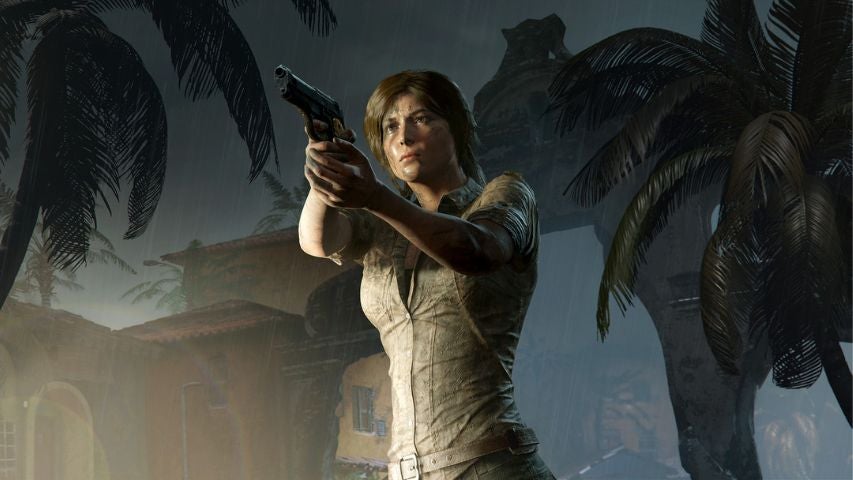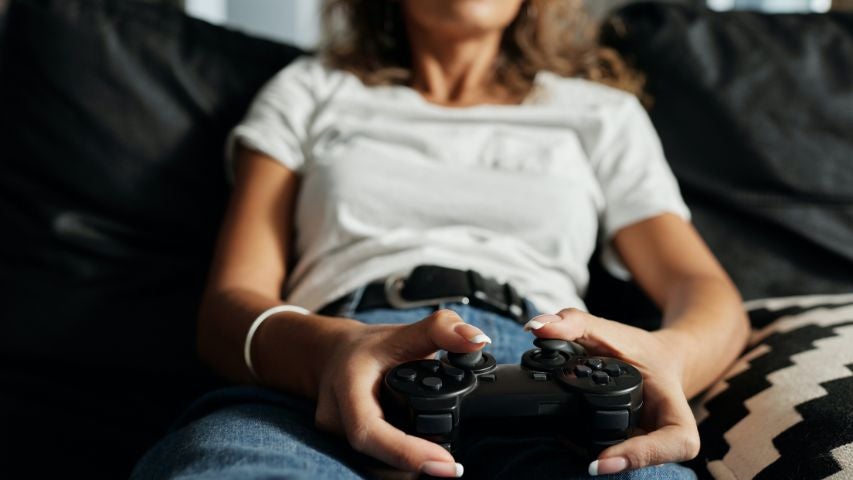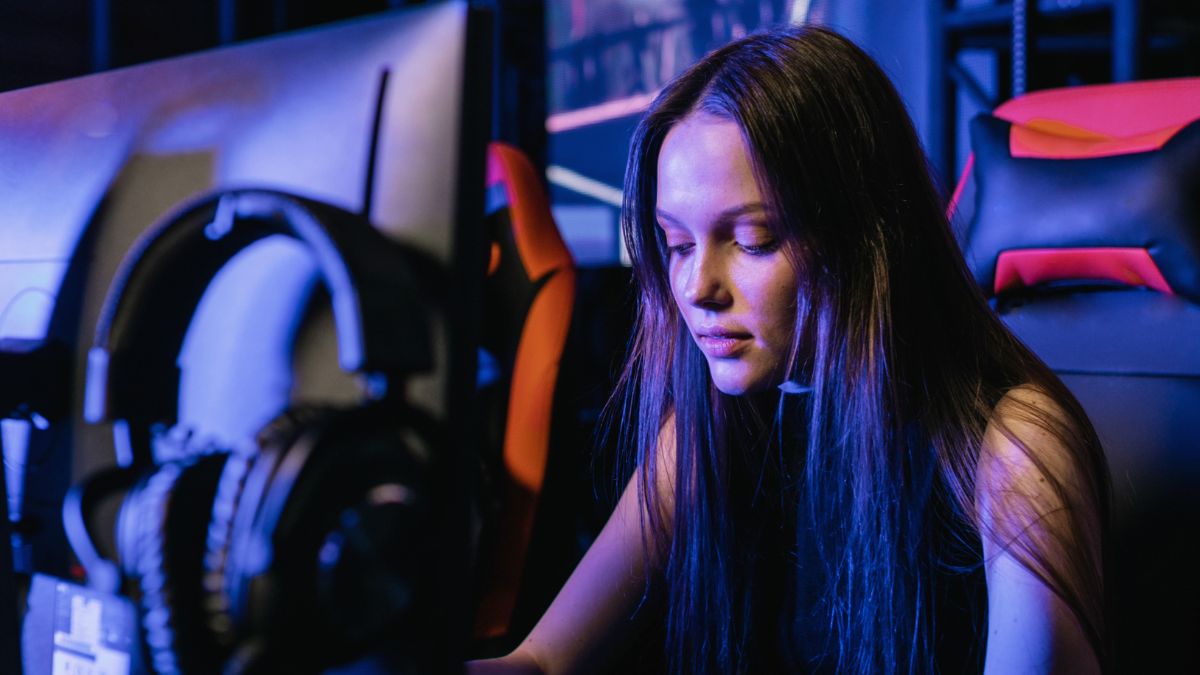![]() Key Takeaway
Key Takeaway
Women have always made a significant contribution to game development, but more needs to be done to encourage and support female developers in today’s industry. Toxic behaviour in the gaming community remains rife and needs to be a priority for gamers and studios alike.
The landscape of gaming is constantly evolving. While women have made vital contributions to game development, they remain faced with challenges from within the industry and from the gaming community itself. Amidst a climate of toxicity and gender disparity, women continue to deserve better.
Table Of Contents
Introduction
Gaming is a multi-billion dollar industry encompassing a wide range of professional disciplines. It’s also one of the fastest-growing industries, with its products providing escapism and entertainment for billions of people across the world.
Game development, design, production, marketing, and many other aspects of the process require a wealth of talent, diverse perspectives, and expertise. With that in mind, it’s important to reflect on whether or not the gaming industry is doing enough to ensure female developers and gamers can both access and succeed in what’s traditionally been a very male-dominated space.
Historical Context: Women in Gaming
Women have always made a significant contribution to the world of gaming. From the earliest input of Ada Lovelace, widely regarded as the first computer programmer, to Grace Hopper, who invented the first computer compiler and designed one of the first known programming languages, women have played a key role in the development of computing and gaming.
The first ever video game designer was a woman named Mabel Addis. She created The Sumerian Game in 1964, which also gave the first real focus on narrative design in gaming. While these early, pioneering steps were all taken by women, the gaming industry, and gaming as a pastime, later developed into something widely viewed as a male-based endeavor.
Although this situation has evolved and improved very slowly over time, figures show that even today, the industry remains predominantly white and male. According to the latest data from the GDC 2023 State of the Game Industry report, women currently only account for 23% and non-binary people account for 5% of the game industry. Clearly, more needs to be done to address this.
Representation of Women in Gaming
Female representation in gaming itself is another factor to take into consideration. Nowadays, women make up a huge proportion of the gaming player base, with 48% of gamers in both the US and the UK identifying as female. Gaming is definitely no longer a male-oriented hobby, however, the representation of women in games has been arguably slower to evolve.
Both the complete lack of female representation and the stereotypical and at times harmful depictions of female characters in video games have been the subject of discussion and studies for years. Many early female characters in gaming have been criticized for their design and development, which appeared to have been created with the male gaze in mind and to appeal to a presumed masculine audience.
Female characters have often seemed to stand as secondary counterparts to their male heroes in games, leading to unhelpful stereotyping and bias. Early examples of this stereotyping can be found in the damsel in distress trope played on through characters such as Princess Peach in many of the Mario franchise games, for example.
Additionally, female characters have also often been represented as either companion or sidekick characters, typically complete with a hypersexualized appearance and unnecessarily revealing attire. Female narratives in games have also often been contentious, with many women in games becoming victims of violence, trauma, mental illness, murder, and sexual assault. Women’s stories being told by men has been, and remains, problematic.
Women as Protagonists
The introduction of Lara Croft as one of the first real female game protagonists took a step forward in representing women as playable characters. However, issues around her earlier physical and clothing design further served to perpetuate the problems of over-sexualization and female objectification.
For many female characters in games, beauty, sexual attractiveness, and skimpy clothing have often appeared to take precedence over personality, skill and intelligence in the years leading even into the mid-2010s.
Thankfully, Lara has undergone a much more realistic transformation over recent years, with visible and more appropriate changes to her body and dress style from her first appearance in 1996 to her latest adventure in 2018.

Alongside Lara, there are other female video game characters who’ve arguably benefitted from the impact of more female game developers and designers entering the workforce. There’s still a lot to do, but in terms of representing women in games, there are now a few more well-rounded female characters, who are the heroes of their own stories and do it with individuality, personality, and depth.
Characters such as Aloy, Ellie, and Alex Chen, for example, are good examples of women with complex personalities and skills who have taken on leading roles in games. Still, there’s definitely further to go, with the number of games where players can play as a female protagonist still lagging behind that of their male-led counterparts.
Challenges Facing Female Gamers
Even post-Gamergate, for female gamers, harassment and discrimination continue to be serious issues. Sadly, gender-specific abuse is increasingly prevalent in gaming, with women finding themselves the target for many toxic behaviors.
These include, but are not limited to, unsolicited “advice”, sexist comments and insults, misogyny, patronizing remarks, overly sexualized and inappropriate messaging, refusal to play, and violent, threatening language.

As a result of these hostile conditions for female gamers, many women choose to play online with an assumed male or gender-neutral identity, and many opt out of using their microphones for voice chat to avoid being recognized as female. With almost half of women gamers reporting experiences of toxic gender-based discrimination and harassment, it’s perhaps no wonder.
This is a problem that’s uniquely dealt with by women in games, which often isn’t helped by the negative stereotyping of female gamers, the design of female characters, and even specific game-based biases that exist in wider circles of popular culture.
Games for Girls
Distorted thinking around games that are specifically “for girls,” such as The Sims 4, Animal Crossing, or Candy Crush, for example, isn’t helped when organizations such as E3 perpetuate the idea of which games women enjoy. While the organization later deleted the tweet and acknowledged its error in furthering harmful stereotypes, biased ideas about which games women should and shouldn’t be playing continue to rumble on.
Another major challenge facing women in gaming is the poor level of representation in the workforce in general. In the gaming and technology industries, women are still largely underrepresented. Figures show that while the number of female game developers is increasing, overall, women still only account for around 30% of the industry worldwide. In the US in particular, this figure comes out slightly lower, at roughly 24%.
This is a challenge that certainly needs addressing by the industry as a whole. Diversifying the workforce to better represent an audience, of whom at least half are demonstrably female, should be a key priority for development studios and technology companies alike.
Triumphs of Female Gamers
Despite the many issues littering the landscape of gaming for women, there are definitely success stories to celebrate. In the esports arena, women are now breaking into an exceptionally male-dominated space with their own teams. There are also organizations such as Paidia, for example, which is led by a female-only team and aims to provide women with better opportunities to play competitively and with greater visibility, thanks to its partnership with Xbox.
More women are also taking strides as professional gamers, with a number of famous female faces climbing the ranks as streamers and esports players. Platforms such as Twitch and YouTube have enabled some women to turn their skills as gamers into viable and lucrative careers whilst building communities around their personal brands.
Despite this, the disparity in terms of both prevalence and earnings between male and female pro gamers is still pretty marked. Specific initiatives such as the Girl Gamer esports festival and organizations such as Women In Games International are working towards leveling the playing field for women in gaming and esports. They have a variety of programs and activities to support women looking to get into and level up in the world of gaming.
Communities and Networks for Female Gamers
There are also a number of online spaces and professional networks for female gamers. Many of these have been created in response to industry and community sexism and toxic behavior. These include groups such as the PMS Clan, the Girl Gamers (GG) Steam Community, Women of Warcraft, Black Girl Gamers, and the Girl Gamers Reddit community. Such networks can provide support and solidarity to women both as players and developers of games.
In addition to providing online spaces and communities, there are a number of groups dedicated to activism on this topic. Women In Games is a predominant community working towards gender equity and parity for women in gaming.
It’s also important to acknowledge that progress is slowly but steadily being made to address these issues. Much of this work is down to the efforts of organizations such as Women In Games, who actively partner with tech companies and game development studios to support them in diversifying male-centric workforces.
Events such as the MCV/DEVELOP Women In Games awards also shine an annual light on the achievements of women working in the games industry. These awards recognize the contributions and efforts of women both in the field of game development itself, but also in the wider fields of games journalism, PR and communications, career mentorship, and education.
The more that the impact of female role models in the games industry is recognized, the more likely it is that a perspective shift may begin to take place both at a company and a cultural level.
Challenges Facing Female Game Developers
While it’s true that female gamers regularly feel the brunt of discrimination and online harassment, such negativity isn’t limited to women as players. Female game developers are also routinely targeted with harassment, threats of sexual and physical violence, doxing, toxic behavior, and objectification.
This behavior comes from both the gaming community at large and in some cases, from within the industry itself. Recent examples of this can be seen in the disgraceful treatment of the female developers from Sony Santa Monica during the pre-release period of God of War Ragnarok last year. Female developers are often at the receiving end of a very specific kind of sexual aggression from male gamers or “fans,” many of whom hide behind a cloak of online anonymity.

From an industry perspective, workplace sexism, sexual harassment, displays of toxic masculinity, and gender-based discrimination remain core issues. In something of a reckoning for the games industry, these ongoing conditions for women have fuelled a number of high-profile lawsuits.
Gaming giants including Activision Blizzard, Sony PlayStation, and Riot Games have been at the center of recent litigation surrounding the treatment of female employees, with other studios such as Ubisoft also being called out for failing to address a climate of discrimination and sexual harassment from a number of senior company figures in recent years.
Bias and Stereotypes
Longstanding biases about game development being a traditionally male career path are also challenging issues for female developers. Improving educational and mentorship opportunities for girls and women is a priority, to encourage more women into the games industry. Initiatives such as Code Coven and Limit Break are great examples of how women considering a role in games can be supported to develop industry skills and access mentorship to help them overcome barriers to entry.
The industry offers a wide variety of roles, from game development to art, audio, marketing, and community management roles, to name a few. Greater awareness of and access to these career paths should be made available to girls and women as early as possible. Doing so will help level the playing field of this male-dominated landscape.
As the saying goes, change starts at the top. At present, women aren’t especially well represented in leadership roles in gaming and tech. In fact, only 16% of women hold senior positions in the global game industry.
Those who do make it into executive-level roles may also find themselves in an overwhelmingly male-centric environment. In many cases, they’re also on the rough end of the gender pay gap, with figures from the UK games industry showing a gender pay gap of 17.1% in 2021. Additionally, these figures also show the lack of female representation in the highest-paid leadership roles.
Triumphs of Female Game Developers
Despite the challenges, many female game developers are succeeding in the industry. Amy Hennig, Bonnie Ross, Robin Hunicke, Tracy Fullerton, Kim Swift, Rebecca Heineman, and Jade Raymond are all high-profile examples of women who’ve made a significant impact on game development. As more women make their mark in the industry, the list of successful female developers is steadily growing.
Some of these successful women are also directly involved with ongoing efforts to promote diversity and inclusion in game development. Tanya X. Short, a successful game designer and studio founder in her own right, also co-founded Pixelles.
The Montreal-based organization is a well-recognized and successful non-profit that works to improve gender diversity in the industry and combat ongoing sexism in gaming. Pixelles offers a range of workshops, game jams, mentorship, and incubator programs which allow women across the world to tap into their creative potential and design their own games.
Encouraging Women Into Gaming and Tech
Alongside Pixelles, there are a variety of additional global initiatives aimed at supporting girls and women, as well as those from underrepresented ethnic and minority backgrounds into gaming. These include Girls Who Code, Women Who Code, the She Plays Games podcast, and Black Girls Code, to name a few.
Advancements are also being made within education to support women and girls to find ways into the gaming and tech industries. However, there’s still a lot more to be done. There’s a significant gender gap in terms of STEM education opportunities for girls and women, although work is being done to research and address this.
Organizations including UNESCO and UN Women are focusing on improving access to STEM education and digital literacy for girls and women. Additionally, women can now access a range of STEM-focused scholarships, as well as gaming-specific scholarship programs at organizations such as Activision Blizzard King, Google (EMEA or NA), and at different universities across the world.
Conclusion
Despite the challenges, it does seem that things are moving in the right direction when it comes to advancing opportunities for women in gaming. The success and determination of women who continue to create and play games in a field that’s rife with an undercurrent of misogyny and sexist behavior is a testament to the central principle that gaming, whether from an industry perspective or a consumer one, is for everyone. Women can succeed and excel in both the gaming industry and its wider community, but more clearly needs to be done.
Diversity and inclusion aren’t just buzzwords. They’re central components of what it means to be a tolerant, productive society. Women deserve the same respect, conditions, pay, and opportunities that men have, and until that’s the case across the board, then work needs to continue to level the playing field.
To better support female gamers and developers and really take steps forward for equality, men in both the gaming industry and the player community should recognize the role they can take in challenging the status quo. Studios and tech companies can work harder on their efforts to recruit more diversely and provide safe physical and psychological environments for women. They also need to ensure there’s support and opportunity for career progression, as well as work harder to close down the gender pay gap.
Small Steps That Support Women in Games
Perhaps crucially, there are things that players can do at a much smaller level to make gaming fairer and safer for women.
When you’re playing in a group with a female gamer, be respectful. If one of your friends is making sexist remarks, call them out on it. If you’re unaware of unconscious bias towards women and girls, read up on it. Learn to recognize and challenge bias head-on.
If you see someone sending gender-based harassment or inappropriate messages to a female developer or gamer, speak up about it. When we’re telling you that your “banter” isn’t appropriate or funny, listen to what we’re saying. Act upon the feedback we give you. That’s what really matters.
Ultimately, the more that men start to hold other men to account for toxic behavior towards women, the better the situation will be for everyone.


